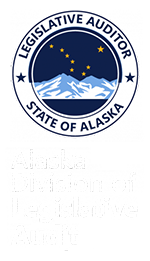Summary: The report offers a number of ways that the department could potentially lower costs in the future. Some of these reductions may be accomplished without cutting services, while others may entail a reduction in services provided by the department. This is distinct from maximizing revenues in that rather than seeking additional funding to offset general funds, these recommendations find ways that the department could be spending less on a task.
Click here for the table of all findings for lowering costs
Click here for the table of all recommendations for lowering costs
Key Findings for Lowering Costs
- Although expenditures per capita continue to rise annually, expenditures per recipient have actually decreased over the period due to increased access and utilization. Spending dropped 12 percent per recipient from 2009 to 2013.
(Recommendation 2.3.3)
- The department has significant room for improvement in minimizing administrative costs related to grants and contracts, as limits or benchmarks have not been established to monitor administrative costs.
(Recommendation 9.1.4)
- The department serves a disproportionate number of Alaska Natives with serious mental illness due to underdeveloped service capacity for these individuals within tribal systems.
(Recommendation 10.1.5)
Key Recommendations for Lowering Costs
- The State should develop a coordinated forensic services unit to oversee forensic evaluations and service coordination, and to minimize costs incurred by the Alaska Court System (ACS), DOC, and DHSS.
(Recommendation 5.5.7)
Alaska’s current forensic evaluation process involves numerous jurisdictional transfers and expensive transport costs, with significant opportunities for logistical streamlining. Alternatives to the current system would involve improved coordination between DHSS and regional ACS and DOC entities that would allow forensic evaluations to be conducted on-site, closer to home communities, instead of requiring multiple flights among several jurisdictions. Transporting the forensic examiner would be less costly than the secure transport required for the individual being evaluated.
- The State should reform Title 12 to distinguish between violent and non-violent misdemeanor offences in the code governing forensic psychiatric evaluations for misdemeanor offenders.
(Recommendation 5.5.8)
Title 12 of the Alaska Statutes dictates a single forensic psychiatric evaluation process for both violent and non-violent misdemeanor offenders. Regardless of the classification of the misdemeanor, and whether individuals are considered a threat to themselves or others, the court system follows the same procedure for individuals requiring a forensic psychiatric evaluation. Although the current procedure meets the security standards for violent misdemeanor offenders, in cases of non-violent offences, the evaluation process is unduly burdensome and can be streamlined significantly to make better use of precious clinical resources.
- The department should consider limiting administrative costs during the grants and contract process to 7-10 percent of the total award.
(Recommendation 9.5.5)
Other states often require grantees and vendors to limit administrative costs to 7-10 percent of the total value of the contract or grant in order to maximize funding devoted to direct behavioral health service delivery and minimize funding dedicated to indirect costs.
- Based on current Division spending for acute and sub-acute behavioral health services, it is estimated that the department could save at least $1 million if a tribal provider established an inpatient psychiatric unit.
(Recommendation 10.3.1)
Roughly 30 percent of adults receiving treatment for severe mental illness within the public behavioral health system are American Indian/Alaska Native individuals. At an average cost of $23,800 per individual per year for institutional intensive psychiatric services, the department spent approximately $14.5 million in FY14 on intensive psychiatric care for American Indian/Alaska Native consumers. The report estimates that if five inpatient psychiatric beds are established in a tribal health facility, which makes the services eligible for 100 percent federal reimbursement, the department could achieve savings of at least $1 million.
- The department should engage Medicaid recipients in helping to identify fraud by providing them with explanation of benefits statements.
(Recommendation 13.2.2)
In contrast to private insurance enrollment, Alaskans do not customarily receive explanation of benefits statements upon enrollment into the Medicaid program. Subsequently, Medicaid recipients are unable to verify services billed on their behalf by providers. This shortcoming of consumer engagement presents providers with the opportunity to submit fraudulent claims.
- The State should consider increasing criminal penalties for Medicaid fraud and assessing interest and additional financial penalties on individuals convicted of Medicaid fraud.
(Recommendation 13.2.3)
Punishing Medicaid fraud with light criminal penalties provides individuals with an economic incentive to defraud the Medicaid program. The State should consider increasing criminal penalties for Medicaid fraud to strongly discourage and more effectively prevent fraudulent Medicaid activity.
- The State should consider strengthening its seizure laws and imposing bonding requirements for high-risk providers.
(Recommendation 13.2.4)
(Recommendation 13.3.2)
Stronger seizure laws will enable the department to recoup overpayments and payments made on fraudulent claims more easily. With enhanced bonding requirements, providers will be required to repay a set amount or percentage to the department in the event of fraud, ensuring the department receives a higher percentage of restitution payments. The report estimates that improved program integrity activities could generate approximately $1 million annually in additional combined cost savings and avoidance for behavioral health services.
- The State should create a robust prescription drug control program, including financial support for and upgrade of the Prescription Drug Database to real-time functionality and removing statutory barriers to state agency access to the database to facilitate fraud identification and drug abuse prevention.
(Recommendation 13.2.5)
This program should include financial support for the Prescription Drug Database sufficient for its upgrade to real-time functionality. Real-time functionality inhibits the ability of consumers to fill multiple prescriptions for prescription opioid narcotics by maintaining an up-to-date complete prescription history. This functionality is nationally recognized as a best practice at improving prescription drug monitoring and preventing fraud. The report estimates savings between $30,000 and $150,000 annually with a more robust prescription drug control program.

